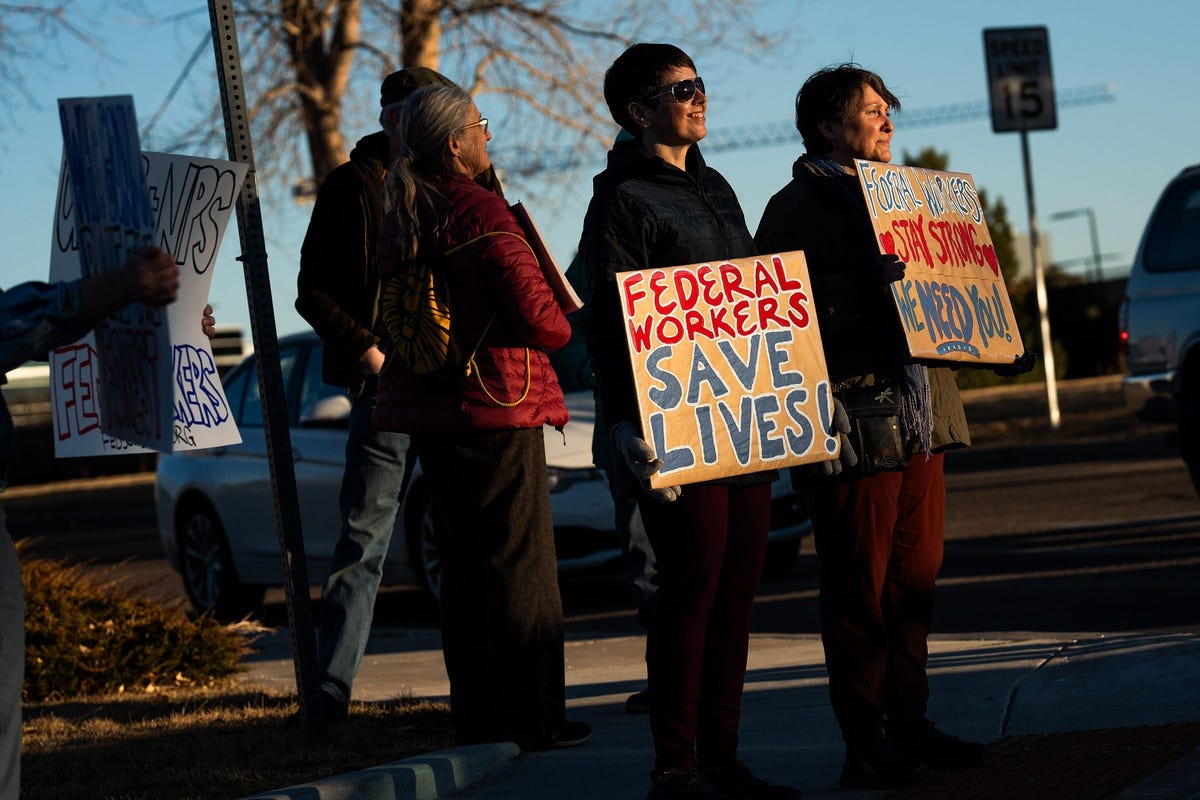
Trump Administration Initiates Large-Scale Federal Employee Layoffs, Sparking Controversy
Washington, D.C. – The Trump administration has commenced a series of significant workforce reductions across multiple federal agencies, triggering widespread concern and legal challenges. Over the past few weeks, thousands of federal employees have been terminated, with the administration citing the need to slash federal spending and improve government efficiency as justification for the drastic measures. The actions have left agencies struggling to cope with the sudden loss of personnel, while affected employees express feelings of betrayal and injustice.
President Donald Trump, alongside his advisor Elon Musk, has consistently advocated for reducing the size and scope of the federal government, promising to streamline operations and eliminate wasteful spending. This latest wave of layoffs appears to be a direct fulfillment of these promises, aiming to reshape the federal bureaucracy and prioritize fiscal responsibility.
However, the manner in which these layoffs are being implemented has drawn sharp criticism. Numerous terminated employees have reported receiving termination letters that questioned their performance, even when their official records reflected positive performance reviews and commendations.
Allie Mitchell, a 30-year-old former researcher at the National Institute on Aging (NIA), expressed her dismay to USA TODAY, stating, "I just feel a sense of emptiness. Like I feel I’ve done everything right…And they just fired us and said it was because of your performance. And that’s not true." Mitchell’s experience underscores a growing concern that the performance-based rationale for these layoffs is being used selectively, potentially masking other motivations for the terminations.
Affected Agencies and Reduction in Force (RIF) Implementation
A recent memo issued jointly by the Office of Personnel Management (OPM) and the Office of Management and Budget (OMB) has provided guidance to federal agencies and departments on implementing "large-scale reductions in force." The memo sets a deadline of March 13 for agencies to prepare for these reductions.
The initial terminations have primarily targeted probationary employees and those recently hired or promoted, who possess less robust employment protections than their more established colleagues. However, the upcoming wave of cuts is anticipated to affect workers with full civil service protections, raising anxieties among a broader range of federal employees.
Several agencies are known to be impacted, including the National Park Service (NPS), the National Institutes of Health (NIH), and the Internal Revenue Service (IRS), with more expected to follow suit as the March 13 deadline approaches.
The OPM/OMB memo justifies the layoffs by asserting that the "federal government is costly, inefficient, and deeply in debt." The memo further claims that "tax dollars are being siphoned off to fund unproductive and unnecessary programs that benefit radical interest groups while hurting hardworking American citizens." This language has fueled accusations of political bias and raised concerns about the administration’s priorities in restructuring the federal workforce.
In addition to layoffs, the memo directs agencies and departments to submit plans by April 14 for potential office relocations from Washington, D.C., to less-costly regions of the country. This directive has sparked speculation that the administration aims to decentralize the federal government, potentially impacting the career prospects and personal lives of many employees.
Remote Workers Face Relocation or Termination
While some federal workers are being offered the option to relocate, others face a stark choice: move to Washington, D.C., or risk losing their jobs. At least two dozen employees at the Office of Personnel Management (OPM) have reportedly received emails informing them of their relocation to Washington, and granting them until March 7 to decide whether to accept.
According to Reuters, some of these remote workers reside thousands of miles from the nation’s capital. The email warns that if they decline to relocate, "their options for continued employment with this agency may be limited, and the Agency may pursue an adverse action against you." This ultimatum has been characterized by union representatives and government experts as another tactic to force federal employees out of their positions.
Legal Challenge and Preliminary Injunction
The Trump administration’s mass firings hit a potential roadblock when Judge William Alsup of the U.S. District Court for the Northern California District issued a temporary block on the layoffs, deeming them likely unlawful.
Judge Alsup asserted that the Office of Personnel Management (OPM) was acting beyond its legal authority by directing personnel decisions in other agencies. "OPM does not have any authority whatsoever, under any statute in the history of the universe, to hire or fire any employees, but its own," Alsup stated.
While the injunction temporarily halts the layoffs, Alsup did not order the rehiring of those already terminated. The legal challenge raises significant questions about the administration’s authority to unilaterally reshape the federal workforce and the potential for further legal action.
Broader Implications and Uncertainty
The ongoing federal layoffs have created widespread uncertainty and anxiety among government employees. The combination of terminations, potential relocations, and legal challenges has destabilized the federal workforce and raised questions about the future direction of government services.
The administration’s emphasis on cost-cutting and efficiency has been met with skepticism by some, who argue that the layoffs could ultimately harm the quality and accessibility of essential government services. Concerns have also been raised about the potential loss of institutional knowledge and expertise, as experienced employees are replaced or forced to leave.
The situation remains fluid, with legal challenges pending and the possibility of further administrative actions. The long-term impact of these layoffs on the federal government and the American public remains to be seen.
Contributing Reporters: Sarah D. Wire, Riley Beggin, Terry Collins, Dinah Voyles Pulver, Jessica Guynn, Joey Garrison, Kayla Jimenez; Reuters.
